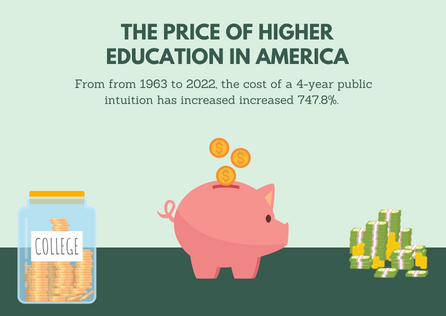It’s 1999, and you’ve just graduated high school. You’ve finally walked across that stage after 13 years of education, shook your principal’s hand and were handed your diploma. You’re set to continue your education at a public 4-year college, and with tuition, fees, room and board, you’ll be paying $8,080 in current dollars to get an undergraduate degree.
Except it’s actually 2022, and that $8,080 has almost tripled at the turn of the century to a total of $22,690.
From 2010 to 2020, the cost of a 4-year public tuition has increased 31.4%, and from 1963 to 2022, adjusting for current inflation, it’s increased 747.8%. American colleges have almost always been notorious for their price tags, and yet remain among the most popular internationally.
The Demand for Higher Education
For many high schoolers though, it’s not only the degree that they’re paying a hefty price for. It’s being housed on campus, the independence, the symbolic red solo cups, late-night studying, meeting new people, escaping their small town and long rides back to that home. It’s the experience, and the rite of passage they’re paying for as well.
The experince is one of the many things that’s allowed these seemingly cost insufficient institutions to keep thriving all these years. The demand for higher education is another thing; it’s stayed high. The National Center for Education Statistics found that 68% of high schoolers graduating in the first nine months of 2020 were enrolled in a college, public or private October of that same year. 43% of them were enrolled in a public institution.
Amy Lenahan, an AP Macroeconomics and Economics and Personal Finance teacher at Patriot High School explains this a bit more. She says, “institutions can continue to raise tuition, [justifying its rising costs] as long as demand is greater than supply…”
Even when employers now are valuing a four-degree education less and less in recent years, people have still been yearning for an exciting college experience. Colleges are not seeing a drop in admissions, it’s actually the opposite.
Lenahan explained that “Although, yes, 4-year degrees are becoming less valuable, the societal emphasis on college being a rite of passage or the next natural step to preparing yourself for life remains strong. Additionally, [while] the need for 4-year bachelor’s degrees may be becoming less valuable, the need for post-graduate study still remains high.”
A strong example of this is jobs in STEM, especially in the biomedical and engineering fields. Many jobs in these fields will always require higher education, and thus keeping the demand high.
The Return of a Higher Education
After putting in countless hours before a laptop listing accomplishments, writing essays, sending in applications, receiving letters and finally accepting a college, most high schoolers aren’t thoroughly considering if their degree will even return its cost.
Lenahan commented, “As a whole, I think most degrees are not returning their true cost, but I do think that more young people are choosing schools based on what they desire their college experience to be rather than what is in their best financial interest.”
For example, if a student wants to become a teacher, they’ll make around 50 thousand year but may want to attend an Ivy League school like Columbia that comes in around 65 thousand.
Lenahan said if an Ivy League is what the student wants, that’s what they’ll ultimately do. She continued, “thirty years ago I think there was more attention paid to financially justifying your chosen school with regard to your intended major.”
It would be honorable for colleges and recruiters to be transparent about this, but Lenahan explained that “most colleges are still competing with one another. If they choose not to disclose this information, that’s up to them. Ultimately, the responsibility lies with the student applying to the school.”
So, while it’s widely understood that American college tuition is inflated, it’s easily justifiable for the institutions themselves. They are high in demand and greatly valued. As more and more students have the opportunity to go into high level careers requiring tertiary degrees, college admission rates will only continue to soar.
For students, just a few ways to possibly lower tuition include taking AP, IB and Dual Enrollment classes in high school, taking CLEP exams through the College Board, choosing in-state colleges, and more. Keeping in communication with counselors and college advisors and seeking out opportunities for scholarship, financial aid and grants will also be crucial.
In the end, the hope is to find a solution to first lower current student debt or forgive it all together, and then target tuitions. Ultimately, congress and other leaders will have to look through an economic lens to find a solution that will help everyone.






